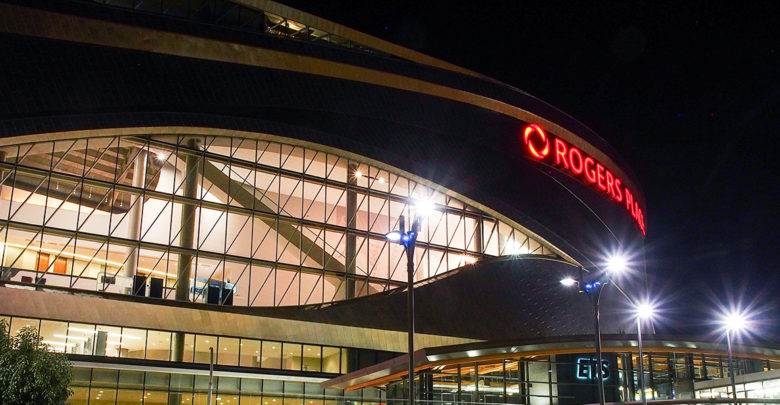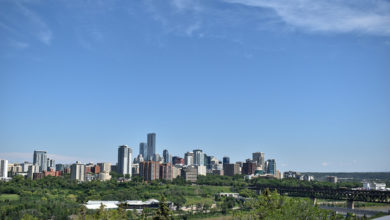Book Review: Power Play: Professional Hockey and the Politics of Urban Development
Want to learn more about Rogers Place? Read this book!
 Alanna Yee
Alanna YeeAt this point I am sure almost everyone has either attended an Oilers game or a concert at Rogers Place.
The facility is impressive. However, the story behind it’s design and development is not as much so. A new book published by the University of Alberta Press highlights what it took to build Rogers Place and the claims of urban development it heralded.
Power Play: Professional Hockey and the Politics of Urban Development by Jay Scherer, David Mills, and Linda Sloan McCulloch is a new impressive book discussing how downtown development in the form of Rogers Place has unequally distributed benefits to some organizations and people while disadvantaging others, including Edmonton taxpayers.
The book is smartly organized to give an overview of the history of professional hockey in Edmonton, the saga of building new arenas and deals in the city, and ultimately concerns from the cautionary Edmonton experience of building a new arena for other cities considering new professional sport stadium development.
While it is over 400 pages in length with footnotes, the book is approachable for anyone interested in the topic. It reads with the rigour of an academic paper, but in the form of a riveting page-turning biographical novel.
The true strength of Power Play lies in its authorship. The three co-authors each bring a unique perspective on the arena debate. Scherer, a professor of the sociology of sport at the U of A, has published for decades on the use of public funds to build private arenas for professional teams. McCulloch was a city councillor from 2004 to 2013 who voted against the Rogers Place arena financing agreement. Mills is a retired professor who taught Canadian history and sports history at the U of A who has written on the business of hockey in Edmonton. The three authors provide different expertise that results in a well-balanced product.
The book chronicles how Edmonton originally had an arena, called the Thistle Rink, for professional hockey and events downtown first opened in 1902.
In 1913 the arena burnt down, forcing professional hockey to relocate to the Edmonton Stock Pavilion at the Northlands Grounds. Ironically, ever since then the city has always yearned for a downtown arena.
In the field of history, the idea of historic reoccurrence — the repetition of events with similar impacts or attributes — has been around since the Ancient Greek philosophers. The authors of Power Play recount several examples where arena development in Edmonton has failed to learn from its past examples.
The book also discusses the borderline shady arena development proceedings. A huge value to Power Play is the use of McCulloch’s copies of internal city council reports and materials from in-camera, or private closed door meetings. The authors also describe how they “continually encountered obstacles” while trying to obtain public information about the arena proceedings.
As someone who wrestles with FOIP regularly and is removed from governance proceedings because of in-camera sessions, I can empathize with the authors. However, it is chilling to know that a vast number of public documents requested by the authors, like foundational arena-related reports, could not be located by municipal staff or were released under redaction to the point they were “virtually incomprehensible.” According to the Office of the City Clerk, not a single piece of correspondence between Mayor Stephen Mandel and Daryl Katz exists.
Ultimately, Power Play asserts that the city was the biggest loser when it came to building the arena. The city financed a majority of the new arena at an enormous cost, but also lost significant revenue by forgiving outstanding debts from Northlands. While it agrees the arena has made positive contributions to Edmonton, it cautions future cities and arena developments to think critically about spending public dollars on private ventures.
While the arena agreement is settled, reading the book now is still valuable. Across North America other cities are exploring their own potential arena developments. The Rogers Place saga in Edmonton is still ongoing, too. Just last year the Katz Group asked the city for an additional $10 million in taxpayer funds to assist in the construction of its public plaza immediately in front of the Rogers Place. Hopefully, like the authors of Power Play exhort, the city is better prepared this time around.




